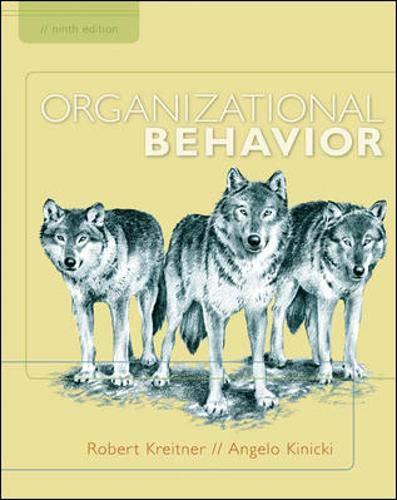Question
From cafes to beauticians: How load shedding takes a toll on small businesses In the five years since Corner Cafe opened its doors a few
From cafes to beauticians: How load shedding takes a toll on small businesses In the five years since Corner Cafe opened its doors a few metres away from the South African Parliament building in Cape Town's central business district, it has become a popular meeting place for politicians, researchers and other locals. But less than two years after the Covid-19 pandemic flattened business in the area and led to many closing shops, Prisca Horonga, the cafe's owner, who works up to 12 hours and employs three people, says it is facing another existential crisis. Since 2022, there have been scheduled blackouts, or load shedding, across the country for as long as 10 hours per day at a time. "You have to wait until the power returns ... we cannot afford a generator, so we lose clients all the time," 32-year-old Horonga, originally from Zimbabwe, told Al Jazeera. In the same district, beautician Nadine Iqani, who has been in operation for the past 15 years, has similar worries. In the past decade, she has managed to juggle her schedule to accommodate clients despite the blackouts, but she says things have worsened in the last year. "I am making a third of the income pre-the load shedding times, and I have clients shouting at me," she told Al Jazeera. "It is just a nightmare ... working long hours, including weekends, to accommodate clients." Now, Iqani is considering saving for an inverter battery system. Many small business owners like her and Horonga say they are close to buckling under the pressure of the crippling power cuts. Some are already warning that there will be job losses as the power cuts continue, and that could have a ripple effect in Africa's most industrialised economy. South African small businesses, often seen as the lifeblood of the economy, account for a third of the country's gross domestic product (GDP). South Africa depends on coal for 80% of its energy needs. But since 2008, national utility company Eskom, which supplies more than 90 percent of the country's electricity, has been implementing load shedding as demand outpaces supply. Power cuts have now increased from only a couple of hours a day at the beginning to Eskom's "Stage 6" - as much as half a day - in the last year, as it tries to protect the country's grid from total collapse. Analysts say underinvestment in the maintenance of ageing coal plants for years has affected Eskom's capacity to deliver consistent power supply to millions of households. Some of the newer power plants have also broken down due to overburdening. Additionally, Eskom, whose debt now stands at approximately R400 billion according to the country's treasury department, has also had to deal with worker strikes in the past year. Counting the cost All of this has had a trickle-down effect on people, many say. "The escalating electricity crisis is causing untold devastation across all social and business activities in the country," wrote the influential Black Business Council (BBC) in a paper released this month. Earlier this month, at the annual Mining Indaba event in Cape Town, Gwede Mantashe, Minister of Mineral Resources and Energy, told the industry that the power cuts cost the economy R1 billion per day. Indeed, the World Bank estimates that Africa's most industrialised economy lost $24bn in 2022 because of power cuts. Workers say the load shedding has worsened living conditions. Many small business owners like her and Horonga say they are close to buckling under the pressure of the crippling power cuts. There have already been protests in recent months in the commercial capital, Johannesburg, as power cuts continue to stoke anger and frustration nationwide. Sizwe Pamla, spokesperson of the Congress of South African Trade Unions (COSATU), the country's largest group of labour unions, told Al Jazeera that President Cyril Ramaphosa and ANC have only 15 months to convince people that they deserve a second chance. "The economy cannot grow, and unemployment cannot be reduced with continuous load shedding," Pamla said. "The government needs to ensure Eskom has all the resources and authority at hand to reduce load shedding."
(Extract, Aljazeera, 2023 - https://www.news24.com/fin24/economy/from-cafes-to-beauticians-how-load-shedding-takes-atoll-on-small-businesses-20230212)
1 Discuss the importance of applying an appropriate risk classification system in risk management and using the FIRM Scorecard, provide a high-level analysis of the risks facing Eskom. 20 marks
2 "Many small business owners say they are close to buckling under the pressure of the crippling power cuts." The Enterprise Risk Management approach consists of four (4) 'risk response strategy' that could be adopted by organisations while facing a risk. Identify and discuss the four (4) risk response strategies and provide an evaluation of which strategy/strategies are being utilised by the small business as presented in the article. 20 marks
Step by Step Solution
3.45 Rating (145 Votes )
There are 3 Steps involved in it
Step: 1
1 Importance of Applying an Appropriate Risk Classification System in Risk Management Applying an appropriate risk classification system in risk management is essential for organizations to identify a...
Get Instant Access to Expert-Tailored Solutions
See step-by-step solutions with expert insights and AI powered tools for academic success
Step: 2

Step: 3

Ace Your Homework with AI
Get the answers you need in no time with our AI-driven, step-by-step assistance
Get Started


